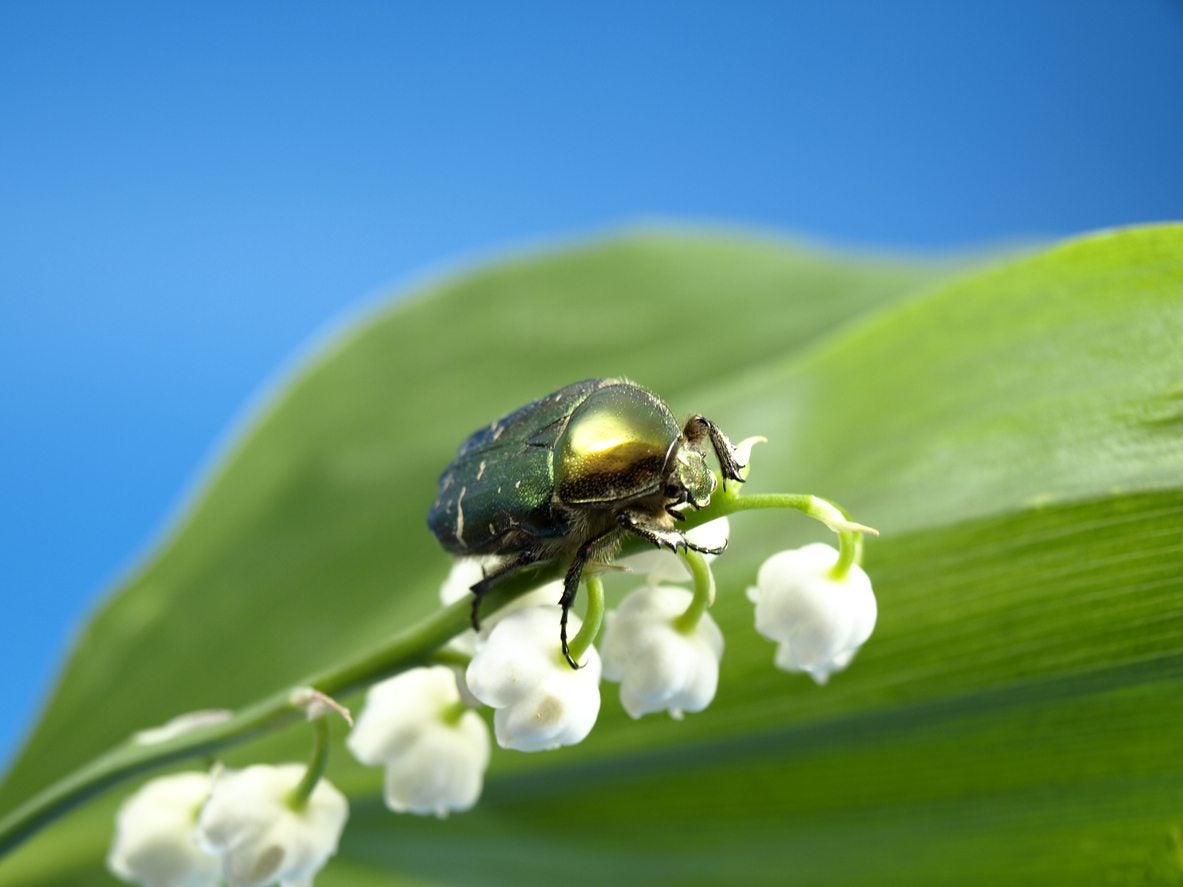Pests On Lily Of The Valley : Bugs And Animals That Eat Lily Of The Valley Plants


A fetching spring perennial, lily of the valley is a native of temperate Europe and Asia. It thrives as a landscape plant in the cooler, moderate ranges of North America. Its sweetly fragrant small, white flowers are a harbinger of summer's warmth. It is not a difficult plant to grow but does require some light maintenance, especially consistent water. There are few disease issues or lily of the valley pests. These are easily managed provided you know what you are looking for and how to treat the problem. Learn what pests on lily of the valley might be of concern, and how to identify and combat them.
Are There Animals That Eat Lily of the Valley?
Over time, a lily of the valley patch will spread and fill in with broad, scooping leaves and the tiny, delicate blooms. There are few animals that eat lily of the valley, as the bulbs contain a toxin that even rodents find distasteful. Even deer do not browse the leaves and flowers. The ASPCA cautions home growers against having lily of the valley in the landscape. The plant is extremely toxic to cats, dogs, and even horses. Most wild creatures avoid the plant and its rhizomes. This woodland native produces its own toxins to prevent wild animals from eating it. The toxin can cause diarrhea, vomiting, seizures, arrhythmia, and even death. Insect lily of the valley pests are also not of much concern, although there are some crawling gastropods that find the leaves rather tasty.
Potential Lily of the Valley Pests
Due to the plant's toxicity, it is rarely bothered by any insects. However, insect pests may have a field day on the leaves and some also snack on the flowers. In hot, dry conditions, spider mites may suck sap from leaves, causing them to turn yellow or stipple. Some gardeners claim weevils are also snacking on their lily of the valley plants, but their appearance is usually brief and does not hurt the plant. The most common and prevalent of the pests are snails and slugs. These gastropods will do quite a bit of damage to the foliage, creating ragged holes in the leaves. This does not destroy the plant, but can reduce its vigor, since leaves are important to the photosynthesis process where plants turn solar energy into carbohydrate fuel.
Treating Pests on Lily of the Valley
Slugs and snails do the most damage to the plant. In raised beds, lay copper tape around the perimeter. The pests are repelled by the metal. You may also choose to use a prepared slug bait but some of these are toxic in the garden with children and pets. Fortunately, there are several safe products on the market. Pull away any mulch, where the pests hide and breed. You may also set traps or containers filled with beer to drown the gastropods. Begin trapping three weeks after the last frost to catch the pests. Refill traps weekly. Alternatively, you can go out after dark with a flashlight and pick off the ravagers. Destroy them how you like, but the process is non-toxic and completely safe in the home landscape.
Sign up for the Gardening Know How newsletter today and receive a free copy of our e-book "How to Grow Delicious Tomatoes".

Bonnie Grant is a professional landscaper with a Certification in Urban Gardening. She has been gardening and writing for 15 years. A former professional chef, she has a passion for edible landscaping.